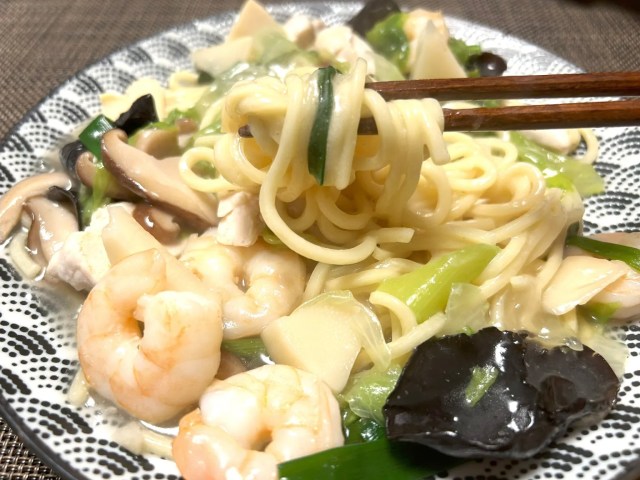
Does our reporter’s attempt cut the mustard?
Our reporter K. Masami often travels to Kyoto, and when she does she’s sure to check out one of the many Cantonese-style Chinese restaurants there. Although they serve a slew of great food, the thing that keeps her coming back for more is the mustard soba (karashi soba).
This dish is rather unique to Kyoto and was said to have been developed by Chinese restauranteurs who moved from the Kanto area and wanted to adapt to Kyoto tastes.
Masami first tried it on a whim while ordering what she saw other customers eating. What came out was a rather unassuming dish of stir-fried noodles, but the server warned her to “be careful because there’s mustard in the noodles.”
▼ This dish uses a hot mustard, known as”karashi” in Japanese.
Sure enough, it had a blast of flavor that made Masami an instant fan. Now, every time she visits Kyoto, she tries it at a different restaurant to compare, but loves it every time. And through these repeated visits she feels she may have figured out how to make mustard soba by herself. It seems to use basic ingredients so she went to her local supermarket to gather everything.
The essential ingredients are mustard paste and Chinese noodles. A cheap tube of mustard paste will do just fine but while noodles are easy to find it might be hard to get restaurant-quality ones. The other ingredients Masami got were chicken stock, shrimp, wood ear mushrooms, lettuce, green onions, bamboo shoots, shiitake mushrooms, and chicken breast, though thigh meat will do if breast is unavailable.
The first step is to prepare the sauce. She mixed the chicken stock with hot water and added it to the chicken, shrimp, and vegetables as she stir-fried them until everything is covered in sauce. Next, she let it all simmer.
When it came to a gentle boil, she added the potato starch mixed with water to thicken it. She felt the taste was a little thin so she added salt and pepper to spice it up a bit.
You’ve probably noticed that so far no mustard has been used. That’s because Masami learned from watching the kitchen staff at restaurants that the mustard is applied directly to the noodles rather than the sauce.
So, she prepared a bowl with a mixture of mustard paste, vinegar, and soy sauce, and added the lightly boiled noodles to it.
The balance of these three flavors can be adjusted for personal taste. In Masami’s case, she likes bold tanginess so she used two and a half tablespoons of mustard and two tablespoons of vinegar.
After mixing the noodles into the flavorings she placed them on a plate and covered them with the sauce.
All in all, it was pretty easy to make mustard soba. Of course, she didn’t quite reach that restaurant-quality taste, but she was close enough to feel satisfied with it.
As with any home-cooking, lessons are learned along the way. For example, in this dish, Masami found that she added the potato starch too early. The texture of the sauce would turn out much better if she had waited and added it just before serving.
Also, since its easy to make and can use common ingredients, Masami often whips it up for a quick lunch when needed. It’s an addictive taste, so if you’re one of the many people who can’t easily get out to a Cantonese restaurant in Kyoto, this is definitely the next best thing.
Photos © SoraNews24
● Want to hear about SoraNews24’s latest articles as soon as they’re published? Follow us on Facebook and Twitter!
[ Read in Japanese ]

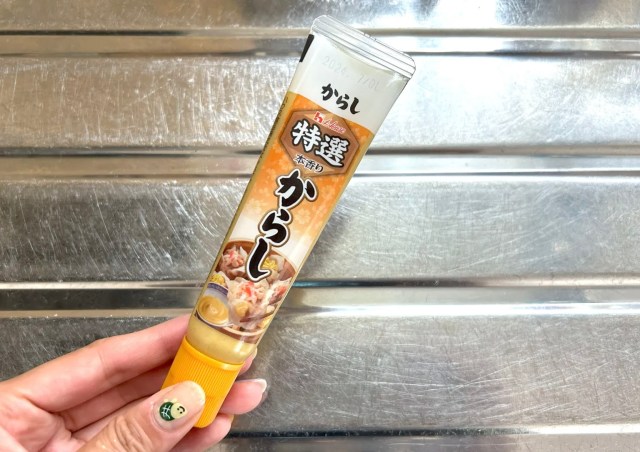
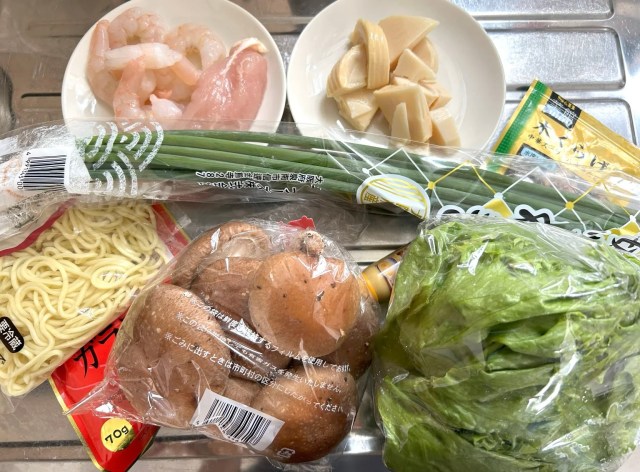
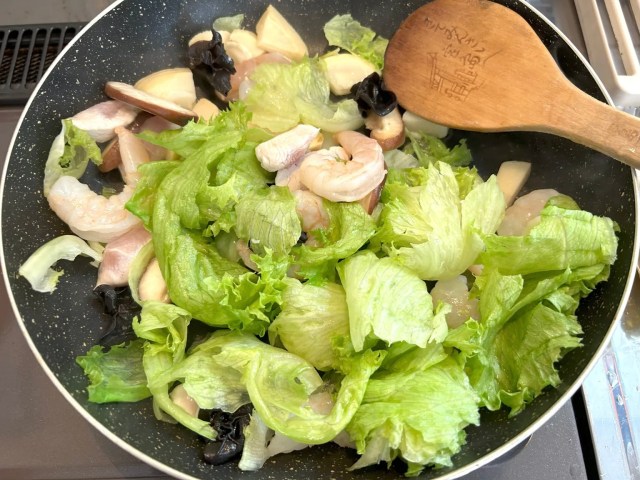
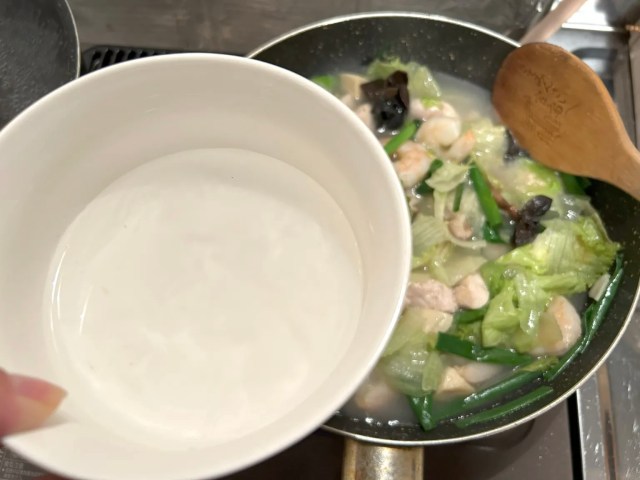

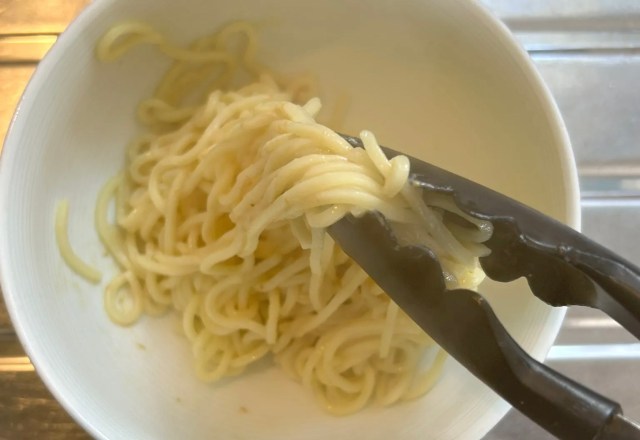
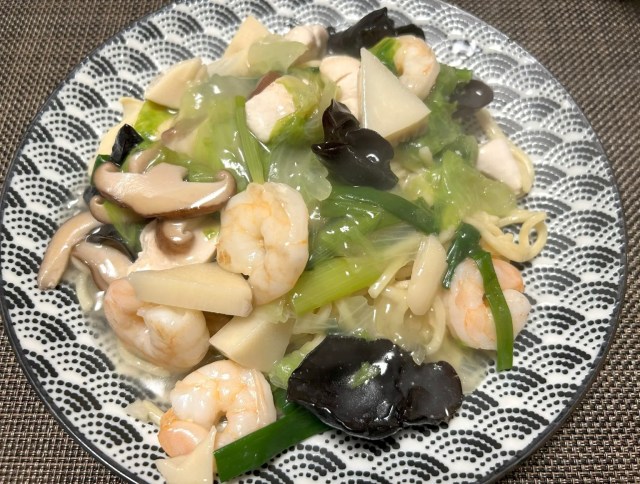
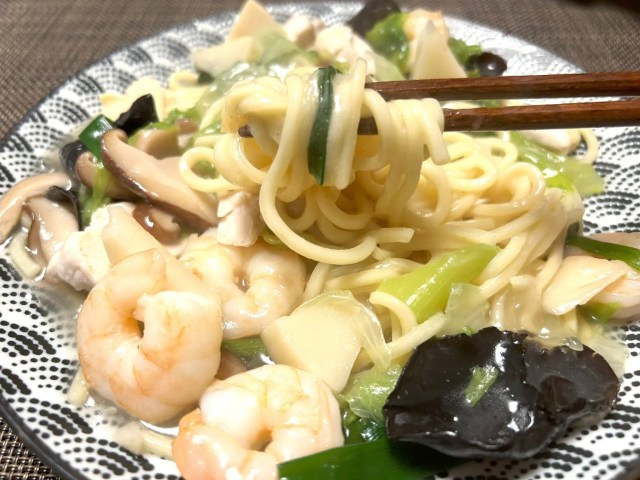
 Kyoto’s famous Chinese dish karashi soba can now be found in Lawson
Kyoto’s famous Chinese dish karashi soba can now be found in Lawson We try cooking yakisoba with real Japanese buckwheat soba【SoraKitchen】
We try cooking yakisoba with real Japanese buckwheat soba【SoraKitchen】 3 quick tips to turn your bowl of home-made noodles into a restaurant-beautiful dish【SoraKitchen】
3 quick tips to turn your bowl of home-made noodles into a restaurant-beautiful dish【SoraKitchen】 We eat Kyoto’s best-loved noodle dish at the restaurant that invented it
We eat Kyoto’s best-loved noodle dish at the restaurant that invented it Japanese restaurant chain shows us how to make katsudon in three minutes【SoraKitchen】
Japanese restaurant chain shows us how to make katsudon in three minutes【SoraKitchen】 Japanese beef bowl chain Sukiya’s 2026 Smile Box lucky bag basically pays for itself
Japanese beef bowl chain Sukiya’s 2026 Smile Box lucky bag basically pays for itself Japanese teen boy picks worst woman to randomly ask if she wants to make an adult video
Japanese teen boy picks worst woman to randomly ask if she wants to make an adult video The Purple Lucky Bag from Village Vanguard is an extra-large waste of money
The Purple Lucky Bag from Village Vanguard is an extra-large waste of money Rakuten randomly offers 58 New Year’s osechi feasts in Japan, but did we get a star or a dud?
Rakuten randomly offers 58 New Year’s osechi feasts in Japan, but did we get a star or a dud? Majority of Japanese mayors say foreign residents are essential but most see good and bad effects
Majority of Japanese mayors say foreign residents are essential but most see good and bad effects New Japanese menstrual product seeks to help women spot unidentified iron deficiencies
New Japanese menstrual product seeks to help women spot unidentified iron deficiencies Our top 3 cafes in Azabudai Hills, Tokyo’s newest and possibly swankiest shopping complex
Our top 3 cafes in Azabudai Hills, Tokyo’s newest and possibly swankiest shopping complex Let’s cook up some noodles measuring 3.6 meters (12 feet) in length!【SoraKitchen】
Let’s cook up some noodles measuring 3.6 meters (12 feet) in length!【SoraKitchen】 Four Shinto shrines to pray for love at in Japan to start the New Year
Four Shinto shrines to pray for love at in Japan to start the New Year Starbucks Japan ready to get Year of the Horse started with adorable drinkware and plushies【Pics】
Starbucks Japan ready to get Year of the Horse started with adorable drinkware and plushies【Pics】 Hayao Miyazaki says Happy New Year to Studio Ghibli fans with new art for Year of the Horse
Hayao Miyazaki says Happy New Year to Studio Ghibli fans with new art for Year of the Horse We found possibly the quietest Japanese-style hotel in Tokyo’s bustling Shinjuku district
We found possibly the quietest Japanese-style hotel in Tokyo’s bustling Shinjuku district Cup Noodle tries an authentic Jiro-style ramen, but something’s not quite right
Cup Noodle tries an authentic Jiro-style ramen, but something’s not quite right The best Starbucks Japan Frappuccinos we want to drink again in 2026
The best Starbucks Japan Frappuccinos we want to drink again in 2026 We revisited Sweets Paradise after a decade to see if Japan’s dessert buffet still delivers
We revisited Sweets Paradise after a decade to see if Japan’s dessert buffet still delivers That time Seiji called JASRAC to ask why he didn’t get paid royalties for his song being on TV
That time Seiji called JASRAC to ask why he didn’t get paid royalties for his song being on TV Japan’s oldest largetooth sawfish in captivity back on display in Mie Prefecture
Japan’s oldest largetooth sawfish in captivity back on display in Mie Prefecture Pizza Hut Japan’s hot lucky bags are perfect for a New Year’s pizza party
Pizza Hut Japan’s hot lucky bags are perfect for a New Year’s pizza party 7-Eleven Japan starts new temporary luggage storage service in over 300 branches
7-Eleven Japan starts new temporary luggage storage service in over 300 branches Disillusionment at Tsukiji’s tourist-target prices led us to a great ramen restaurant in Tokyo
Disillusionment at Tsukiji’s tourist-target prices led us to a great ramen restaurant in Tokyo Starbucks teams up with 166-year-old Kyoto doll maker for Year of the Horse decorations【Photos】
Starbucks teams up with 166-year-old Kyoto doll maker for Year of the Horse decorations【Photos】 Tokyo considering law requiring more trash cans following litter increase in heavily touristed area
Tokyo considering law requiring more trash cans following litter increase in heavily touristed area Tokyo’s Tsukiji sushi neighborhood asks tour groups to stay away for the rest of the month
Tokyo’s Tsukiji sushi neighborhood asks tour groups to stay away for the rest of the month Tokyo event lets you travel back in time, for free, to celebrate 100 years since Showa era start
Tokyo event lets you travel back in time, for free, to celebrate 100 years since Showa era start Japan may add Japanese language proficiency, lifestyle classes to permanent foreign resident requirements
Japan may add Japanese language proficiency, lifestyle classes to permanent foreign resident requirements Sanrio theme park in Japan announces plans to expand into a Sanrio resort
Sanrio theme park in Japan announces plans to expand into a Sanrio resort Stamina-destroying “Paralysis Noodles” are Tokyo’s newest over-the-top ramen innovation
Stamina-destroying “Paralysis Noodles” are Tokyo’s newest over-the-top ramen innovation Survey asks foreign tourists what bothered them in Japan, more than half gave same answer
Survey asks foreign tourists what bothered them in Japan, more than half gave same answer Japan’s human washing machines will go on sale to general public, demos to be held in Tokyo
Japan’s human washing machines will go on sale to general public, demos to be held in Tokyo Japan’s deadliest food claims more victims, but why do people keep eating it for New Year’s?
Japan’s deadliest food claims more victims, but why do people keep eating it for New Year’s? We deeply regret going into this tunnel on our walk in the mountains of Japan
We deeply regret going into this tunnel on our walk in the mountains of Japan Studio Ghibli releases Kodama forest spirits from Princess Mononoke to light up your home
Studio Ghibli releases Kodama forest spirits from Princess Mononoke to light up your home Major Japanese hotel chain says reservations via overseas booking sites may not be valid
Major Japanese hotel chain says reservations via overseas booking sites may not be valid Put sesame oil in your coffee? Japanese maker says it’s the best way to start your day【Taste test】
Put sesame oil in your coffee? Japanese maker says it’s the best way to start your day【Taste test】 No more using real katana for tourism activities, Japan’s National Police Agency says
No more using real katana for tourism activities, Japan’s National Police Agency says Starbucks Japan reveals new sakura drinkware collection, inspired by evening cherry blossoms
Starbucks Japan reveals new sakura drinkware collection, inspired by evening cherry blossoms Updated cherry blossom forecast shows extra-long sakura season for Japan this year
Updated cherry blossom forecast shows extra-long sakura season for Japan this year What the heck is okame soba?
What the heck is okame soba? Let’s cook up some noodles measuring 3.6 meters (12 feet) in length!【SoraKitchen】
Let’s cook up some noodles measuring 3.6 meters (12 feet) in length!【SoraKitchen】 Let’s try making our own Chinese McDonald’s Oreo-Spam burgers!【SoraKitchen】
Let’s try making our own Chinese McDonald’s Oreo-Spam burgers!【SoraKitchen】 Kyoto Station’s hidden-in-plain-sight curry should be the last thing you eat before leaving town
Kyoto Station’s hidden-in-plain-sight curry should be the last thing you eat before leaving town Want the noodles without the noise? This is the perfect place for you to try wanko soba
Want the noodles without the noise? This is the perfect place for you to try wanko soba We serve a hot dish of the five best stand-and-eat soba restaurants in one area of Tokyo
We serve a hot dish of the five best stand-and-eat soba restaurants in one area of Tokyo New Japanese dish combines two summertime greats – soba noodles and kakigori shaved ice
New Japanese dish combines two summertime greats – soba noodles and kakigori shaved ice Kakiage towers and Italian soba? We try out a unique soba restaurant in Tokyo
Kakiage towers and Italian soba? We try out a unique soba restaurant in Tokyo Michelin-approved Motenashi Kuroki in Akihabara serves salt soba that stuns and satisfies
Michelin-approved Motenashi Kuroki in Akihabara serves salt soba that stuns and satisfies Ninja Soba Goemon: A Japanese restaurant that’s like a ninja hideout
Ninja Soba Goemon: A Japanese restaurant that’s like a ninja hideout Ramen restaurant in Kyoto offers all-you-can-eat toppings and side dishes for free
Ramen restaurant in Kyoto offers all-you-can-eat toppings and side dishes for free Master the art of making soba noodles with this easy to use kit from Japan
Master the art of making soba noodles with this easy to use kit from Japan If you cook Kyoto’s famous chewy “raw” confectionary, will it become a rice cracker?【SoraKitchen】
If you cook Kyoto’s famous chewy “raw” confectionary, will it become a rice cracker?【SoraKitchen】 We try making imoni, the beloved taro and beef stew of northern Japan【SoraKitchen】
We try making imoni, the beloved taro and beef stew of northern Japan【SoraKitchen】 Marvelous Soba: Colour-changing noodle broth creates a twist ending to your meal
Marvelous Soba: Colour-changing noodle broth creates a twist ending to your meal
Leave a Reply